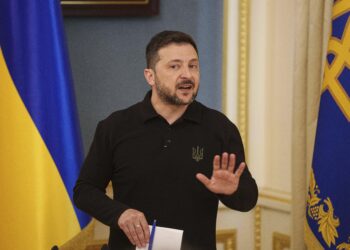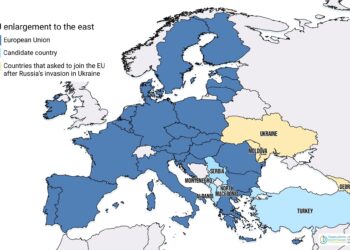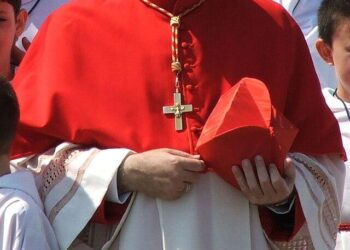Introduction
In recent years, Hungary has emerged as a focal point in global discussions surrounding child protection policies, particularly in the context of education and social values.The Hungarian government, under the leadership of Prime minister Viktor Orbán, has implemented a series of controversial laws aimed at safeguarding children from what it deems harmful ideologies, particularly those related to LGBTQ+ issues and gender identity. This article delves into Hungary’s legislative measures, exploring the rationale behind thes protections as articulated by government officials and supporters, while also examining the broader implications for children’s rights, educational content, and societal norms. As debates rage on both within Hungary and across Europe,understanding the nuances of these policies is essential for grasping the complex dynamics at play in the protection of children and the preservation of cultural identity in a rapidly changing world.
Child Protection Policies in Hungary and Their underlying Motivations
In recent years, Hungary has implemented a series of child protection policies that reflect both national and religious values. These initiatives aim to shield children from various societal threats, including sexual exploitation, substance abuse, and the influence of harmful ideologies. The Hungarian government, alongside religious institutions, emphasizes the importance of maintaining a conventional family structure, which they believe serves as the first line of defense against morally and socially destabilizing forces. to this end, a framework of laws and community programs has been established, focusing on:
- Educational reforms aimed at promoting moral education and family values.
- Stricter regulations on pornography and sexual content accessible to minors.
- Support systems for families, including financial incentives for having children.
Moreover, these policies are underpinned by a distinct political rhetoric that reflects Hungary’s commitment to safeguarding its cultural heritage. The government communicates that these protective measures stem from a need to counteract perceived threats posed by globalization and liberal ideologies, which they argue can compromise the integrity of Hungary’s youth. Here is a summary of key initiatives:
| Initiative | description |
|---|---|
| Family Protection Action Plan | A complete program aimed at strengthening families through economic and social support. |
| Child Welfare Services | Enhanced services to protect children in at-risk situations,including monitoring and intervention. |
| Media Regulations | Measures to limit children’s exposure to inappropriate content across various media. |

Understanding Hungarys Stance on Gender Identity and Education
In recent years, Hungary has adopted a legislative approach towards issues of gender identity and education that has stirred considerable debate both domestically and internationally. The government maintains that its policies are designed to protect children by ensuring that educational content aligns with what it describes as traditional family values and Christian principles. Critics argue that these policies marginalize LGBTQ+ communities and inhibit open discussions about identity in educational settings. However, supporters of the measures contend that children should be shielded from concepts they deem inappropriate for their age, asserting that such a strategy reinforces societal norms and protects the moral fabric of the nation.
The Hungarian government’s stance is reflected in several key legislative measures that restrict the teaching of certain topics related to gender identity in schools. These efforts include:
- Prohibition of LGBTQ+ content in school curriculums.
- Bans on public dissemination of materials seen as promoting alternative family structures.
- Mandatory parental consent for discussions on gender identity and sexuality.
While proponents state that the ultimate goal is to preserve innocence and ensure stability in childhood development, opponents call into question the long-term implications of such policies on personal freedom and equality in society. The ongoing discourse in Hungary underscores the tension between safeguarding children and advancing inclusivity in diverse social contexts.

The Role of the catholic Church in Shaping Legislation
The influence of the Catholic Church extends deeply into the fabric of societal norms and legal frameworks, particularly in Hungary where it plays a pivotal role in advocating for legislation aimed at protecting children.The Church’s teachings and moral directives serve as guiding principles for lawmakers, influencing debates on various issues that affect the young population.This is evidenced by recent legislative measures that seek to reinforce traditional family values, emphasizing the importance of securing a safe and nurturing environment for children.
In shaping child protection laws, the Catholic Church emphasizes several key aspects:
- The sanctity of family: Advocating for laws that uphold family integrity.
- Education reform: Promoting curricula that align with Christian values and teachings.
- Safeguarding against harmful content: Lobbying for restrictions on exposure to materials deemed inappropriate.
The interaction between the Church and the legislative body highlights the significance of moral considerations in public policy, reflecting a broader commitment to a societal framework that prioritizes the well-being of children.

Impact of Hungarys Laws on Child Welfare and Parental Rights
The recent legislative measures in Hungary have sparked a significant debate regarding their influence on child welfare and parental rights.Critics argue that these laws, aimed at protecting children from perceived ideological threats, may inconveniently infringe upon the rights of parents to make informed choices regarding their children’s upbringing. Key aspects of these laws include:
- Prohibition of certain educational materials that promote gender diversity.
- Mandatory parental consent for participation in seminars addressing sexual orientation.
- Restrictions on the portrayal of LGBTQ+ themes in media accessible to minors.
Proponents of the legislation believe these regulations are essential in creating a safe environment for children, arguing that they safeguard traditional family values. Questions arise, though, about the potential long-term impacts on children’s understanding and acceptance of diversity. The following table outlines the contrasting viewpoints on this issue:
| Perspective | Argument |
|---|---|
| Supporters | Claim that safeguarding traditional values protects children from confusion and harm. |
| Opponents | Caution that such restrictions may foster intolerance and diminish children’s chances for a well-rounded understanding of the world. |

Recommendations for Balancing Cultural Values with Child Protection
Achieving a harmonious balance between cultural values and child protection necessitates a nuanced approach, grounded in dialog and understanding. To navigate this complex landscape, it is essential to engage stakeholders at all levels, including parents, educators, and community leaders. By fostering open discussions,communities can address concerns and collaboratively develop safeguarding measures that respect cultural traditions while prioritizing the welfare of children. This process involves:
- Inclusive conversations: Create forums where diverse voices can contribute to the child protection dialogue.
- Education Initiatives: Implement programs to raise awareness about the importance of child protection in various cultural contexts.
- Policy development: Craft policies that reflect cultural sensitivities while adhering to worldwide child protection standards.
Furthermore, integrating cultural values into child protection practices can help ensure that caregivers feel both respected and heard. By recognizing and valuing local customs, effective strategies can be developed that resonate with families and communities. This may involve:
- Community-Based Approaches: Empower local organizations to lead initiatives tailored to specific cultural contexts.
- Parent Workshops: Offer resources that equip parents with knowledge about balancing cultural norms with modern child protection needs.
- Feedback Mechanisms: Establish systems to gather community input on child protection policies to enhance their relevance and acceptance.

Challenges and criticisms of Hungarys Approach to Child Safety
While Hungary’s approach to child safety has garnered attention and support for its protective measures, it is indeed not without its challenges and criticisms.Detractors argue that the government’s stringent policies can lead to overreach in the lives of families, creating an environment of mistrust between parents and authorities. Some key concerns include:
- Infringement on Parental rights: Critics claim that certain programs undermine parental authority and decision-making.
- Resource Allocation: Increased funding for child protection initiatives may divert resources away from other vital services, such as education and health care.
- Stigmatization: The focus on certain groups, especially marginalized communities, may foster stigma rather than encourage inclusive support systems.
Furthermore,Hungary’s legislative framework around child safety has faced scrutiny for being overly restrictive. Some policies can lead to accusations of discrimination,particularly against individuals or groups perceived to be at odds with conservative family values. Concerns raised include:
- Impact on LGBTQ+ Youth: Specific laws aimed at protecting children can be interpreted as having exclusionary effects on LGBTQ+ children and their families.
- Potential for Abuse: There are fears that excessive authority in child protection could be misused, resulting in wrongful interventions.
- Resistance from NGOs: Advocacy groups argue that they are hindered in their efforts to support families, leading to reduced access to essential services.

To Conclude
Hungary’s approach to child protection has sparked significant debate both domestically and internationally. By implementing policies aimed at shielding children from what the government describes as harmful influences, Hungarian authorities underscore their commitment to traditional family values and national identity. Critics,however,argue that these measures may limit freedom of expression and access to vital facts.as Hungary navigates the complex landscape of child welfare, the tension between protecting children and preserving individual rights continues to shape the discourse. As this issue evolves, it will be crucial to observe the impacts of these policies on Hungarian society and their reception on the global stage. The balance between safeguarding young minds and ensuring inclusive dialogue remains a critical challenge that merits ongoing discussion and scrutiny.











Speed Demon: Todd Bowles Names Jacob Parrish the Fastest Player on the Field!